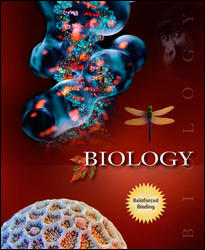 
Biology, Eighth Edition (Raven)Chapter 36:
Plant FormLearning OutcomesChapter 36
- Understand the nature and importance of the three kinds of plant meristem cells.
- Indicate the identity and function of the three basic tissue types in plants.
- Explain primary growth and understand how it differs from secondary growth.
- Describe each of the plant cell types, its function, and indicate whether the cell is capable of further division.
- Know what types of cells are present in xylem and phloem and how each functions.
- Describe the four zones of growth in roots and how growth occurs in each zone. What different root morphologies exist?
- Identify the most obvious external components of stems. Are all stem morphologies identical?
- Understand how leaf growth differs from that of roots and stems. Are all leaf morphologies identical?
- Structurally differentiate among monocot, herbaceous eudicot, and woody eudicot stems, and between monocot and eudicot roots.
- Understand the roles of vascular cambium and cork cambium in secondary growth. Where and how do these tissues differentiate?
- Understand what wood is, how it is formed, and what is indicated by its annual growth rings.
- Describe the structure of a typical leaf and how that structure relates to the process of photosynthesis.
 |  |
|





